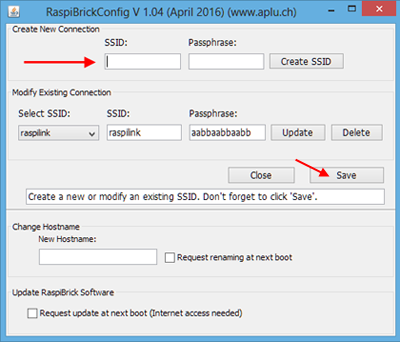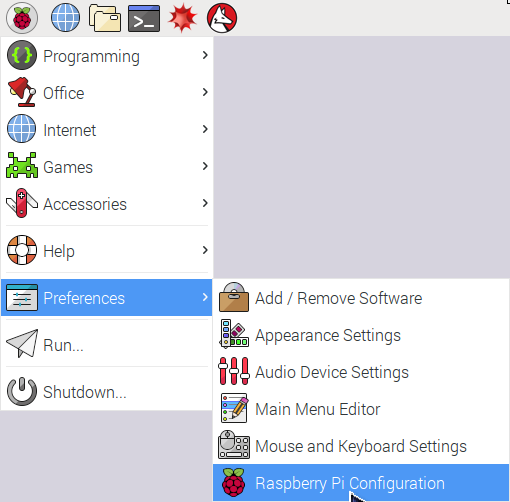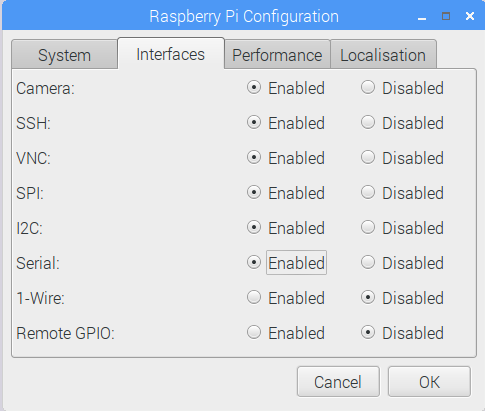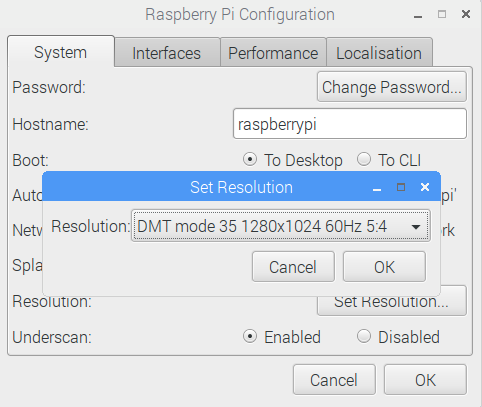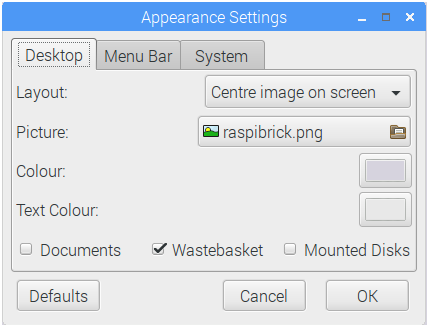| Python Exemplary |
RASPIBRICK FIRMWARE INSTALLATION
![]()
Preliminary |
Our SD-card installation is called RaspiBrick Firmware because it contains a few, but important addons to the NOOBS distribution. The same firmware can be used for an independent (standalone) Raspberry Pi and one that is mounted on a Pi2Go robot, because the boot process performs the necessary selection:
(See our Pi2Go/Raspibrick website for more information). If you use the Raspberry Pi exclusively in standalone mode, you may disable this boot sequence by quitting autostart.sh in a early stage, eventually by launching your own startup Python script. In this case, it is also possible to use a standard NOOPS or Raspbian, or a product-specific Linux installation (like Dexter's BrickPi), and add some few scripts to enable remote development with TigerJython (see appendix). |
Installation with preconfigured SD-card image |
We recommend to use our preconfigured SD-card image that is created by applying the manual procedure described later on. This is most easy for you because you do not have to connect any external devices (screen/keyboard/mouse) to your Raspberry Pi.
The SD card is now ready to be used. (If the Raspberry Pi is supposed to be used with the Pi2Go robot, insert it at the robot now, so you can see LED and display information.) The first boot process takes a bit longer because some initializing processes are executed. (For use with the Pi2Go, consult the RaspiBrick firmware information.) |
Manual installation (from NOOBS distribution) |
|
If you are interested to know how the card image is created or if you want to learn how to configure a Raspberry Pi operating system from scratch, you can follow the manual installation procedure. In this case you have to connect a HDMI monitor (or a VGA monitor connected via a HDMI-to-VGA adapter), and a USB keyboard/mouse.
The basic installation is finished. |
Installation of the RaspiBrick firmware |
|
Change background image |
You may modify the background image of the desktop in the following dialog:
|
Installing TigerJython on Raspberry Pi |
As above, enter in a terminal the following lines (+Enter/Return):
./install/install-tj (do not forget leading dot)
After you reboot, you see the TigerJython icon on the desktop. A double-click starts TigerJython in administrator mode. |
|
|
Appendix: Install Remote Development for TigerJython (without RaspiBrick) |
|
If you want to use your existing Raspberry Pi installation and enable remote development for TigerJython, just copy three shell scripts: pyrun, startApp, and rkill into the Linux path and add the /home/pi/raspibrick/Lib. Proceed as follows: user: pi |
